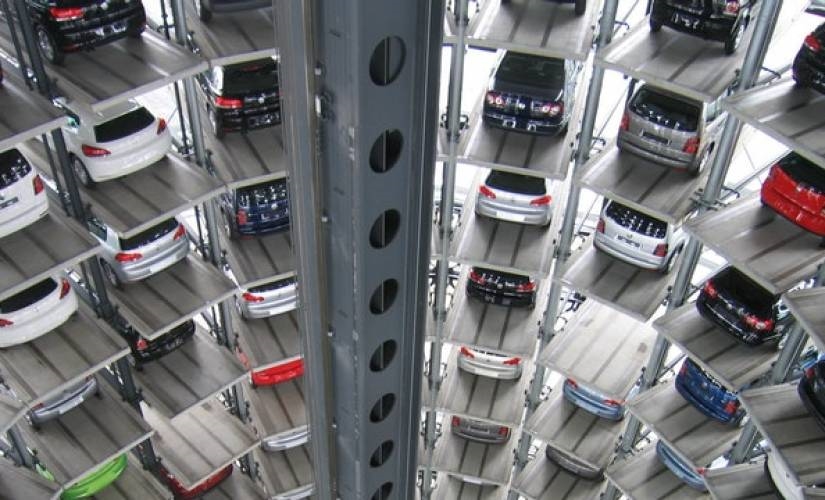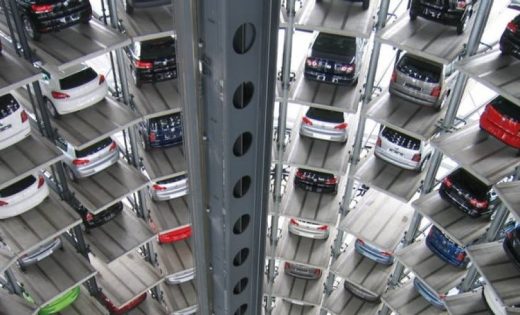6 Ways the IoT is Transforming the Auto Industry
6 Ways the IoT is Transforming the Auto Industry

As the IoT continues to leave its mark on dozens of different markets and niches, the future of the automotive industry is starting to take shape. Major changes have already occurred and more are on the way – so what do they mean for the future?
With IoT, Rapid Change Becomes the Norm
Believe it or not – and this is particularly challenging for young folks to grasp – there was a time when you didn’t need to be a grease monkey to understand what was going on underneath the hood of a car. It was fairly easy to understand how cars worked and the average person was completely capable of doing his own maintenance on basic parts.
Today, not so much.
In the days before computers, little problems weren’t a big deal. If your truck was burning a little bit of oil, you simply had to top it off and make sure the oil level didn’t get too low. Today, this approach might not work. Whatever is causing the oil to burn off could send a signal to a computer and shut down other key systems – making the problem worse (and rendering your truck useless until a costly fix is made.)
But it’s not just the technology in cars that’s changing – it’s the business side of the industry, as well. From how auto manufacturers structure their arrangements with dealerships to how the end customer ultimately makes the purchase, very little about today’s setup looks anything like what was happening in the past.
But here’s the thing: We’re just getting started.
As the IoT continues to expand and its technological tentacles find their way into more core areas of the industry, the auto world is going to experience an even more dizzying pace of innovation and evolution.
Change always brings a mixed bag of emotions. While there will always be people who dig their heels into the ground and whine about hanging on to (December 27, 2019), most people naturally embrace the ebb and flow of new innovation. And the quicker consumers latch on to these positive developments, the more they’ll impact what we buy, how we buy, how we drive, and – ultimately – how we live.
6 IoT Trends in the Automotive Industry
Trying to compile a list of IoT trends in the automotive space is challenging. However, as we enter 2020, there are a few that stand out more than most. Let’s dig in a little deeper and study what’s happening behind the scenes.
1. New Design Ideation Processes
Over the years, one of the biggest sticking points has always been the slow-moving nature of manufacturing.
Traditionally, researchers would conduct studies and find out what consumers really wanted. Then they’d take these findings to the manufacturers and meetings upon meetings ensued. Once changes were agreed upon, they would go through rigorous testing. This testing would lead to proposed changes, which would eventually get put into the manufacturing pipeline for future models. Then months (or years) later, the technology would finally be introduced into a vehicle that a customer could buy at a dealership.
Slow, slow, and slower.
Today, IoT is making it easier for companies to manage the product lifecycle. They’re able to accelerate product and engineering timelines, which results in a much faster time to market. Naturally, this results in a superior product with a higher degree of customer satisfaction.
The secret is found in the way IoT technology clears up confusion in the processes and reduces manufacturing costs. Advanced systems are capable of identifying which components add value and which ones don’t. The latter components are removed and the high value ones are put through machine learning processes to augment the design and ideation in a way that’s most likely to guarantee success.
2. Superior Service Enablement
Did you know that many of today’s newer vehicles come with more than 100 million lines of code? While it’s pretty impressive, it can also be a bit frustrating. All it takes is something going wrong in a few lines of code and problems ensue. This has produced a serious need for advanced code management and service (in addition to traditional mechanics).
But guess what? All these lines of code are actually making it easier for manufacturers to identify, track, and understand what’s going wrong. This enables them to conduct more efficient maintenance, send out proactive notifications, and provide more value.
Secondarily, software gives manufacturers the ability to create an additional stream of revenue. By releasing occasional software upgrades, they can actually tap into customers’ wallets more frequently. (The typical customer only buys a car every few years – so this is a practical way of generating more value per customer.)
3. Digitized Buying and Selling
While traditional modes of buying a vehicle still exist, the days of kicking tires at dealerships are coming to an end. There will always be people who want the dealership experience – and it won’t necessarily become obsolete – but IoT technology has opened up the doors to completely new processes.
Car services like Carvana are a great example. Customers have the ability to shop for vehicles online, see pictures, secure a price, and then have the vehicle shipped to them.
Even cash for cars services are booming. With these services, a company shows up at your home or place of work and will actually buy your vehicle on the spot. Everything from the cash to titles and registration are handled then and there.
Customers want convenience and new technology is making it possible to buy, sell, and trade in without wasting time in a dealership. This is good news for drivers, but could prove to be challenging for dealerships.
4. New In-Cabin Features
If you haven’t been inside a new luxury vehicle in the last couple of years, you’d be shocked to discover all of the in-cabin features. From infotainment features like Apple CarPlay and music streaming services to predictive maintenance to driverless features that automatically kick in when needed, the new driver experience is powered by convenient and progressive technology.
5. Superior Traffic Reporting
We hear a lot about how technology makes roads more dangerous. There’s a lot of talk regarding distracted driving and other issues. But the reality is that certain IoT innovations actually have the ability to make our roads safer.
For example, the IoT can be used to send out alerts that detect accidents and even provide warnings of bad driving. This enables emergency services to respond faster. Not only does this help with medical care, but it also clears up traffic faster and keeps roadways clear.
Then there’s the issue of “swarm intelligence,” which gives traffic operaters the ability to carefully coordinate the flow of traffic to reduce congestion in real-time. This has the potential to eliminate bottlenecks in busy areas – like major cities or interstates – and alleviate traffic frustrations.
Additionally, IoT applications under current development would allow state departments to design and develop roads that actually detect and track things like traffic usage, maintenance needs, and accident data. This could lead to safer roads, fewer wrecks, and better overall traffic patterns.
6. Enhanced Security
Any time IoT technology is introduced into a consumer product that’s as personal and private as a vehicle, there will be concerns over security. Thankfully, these issues are being addressed. In fact, IoT may also be improving the physical security of vehicles at the same time.
For a few years now, BMW has given its owners of newer models the ability to download the My BMW Remote App. This app not only lets drivers start their cars remotely, but it also provides capabilities like locking and unlocking doors, flashing the lights, sounding the horn, and modulating temperature and airflow inside the cabin.
TapKey is another app that’s gaining adulation. It essentially turns any smartphone into a car key and allows vehicle owners to grant vehicle access to other drivers without handing off a physical key.
What Does the Future Hold?
Trying to prognosticate on the future of the auto industry is a lot like guessing the weather forecast for a random day on next year’s calendar – you can’t do it. However, there’s a lot of information to consider. We can clearly see the direction that the IoT is pulling us.
For better or worse, we’re moving to an industry that will be defined by automation. For now, it’s little bits and pieces that are automated. Soon, automation will be the defining label of the day. Once it is, we’ll wonder how we ever did without it.
The post 6 Ways the IoT is Transforming the Auto Industry appeared first on ReadWrite.
(19)


